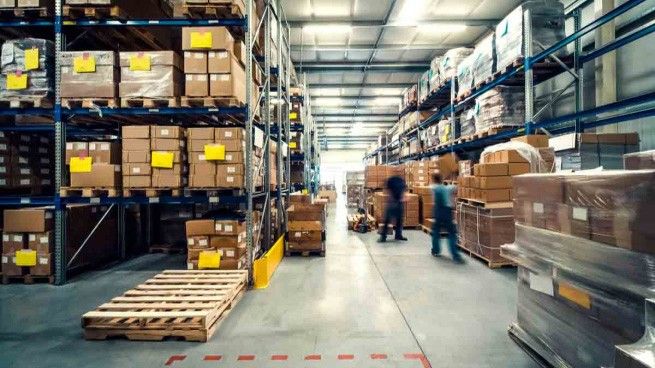 Thematic Investing
Thematic InvestingAccess companies at the leading edge of trends disrupting our economy and reshaping the future.
Lorem ipsum dolor sit amet consectetur.
Two successive U.S. administrations, one from each party, have now stressed the importance of an infrastructure bill. With a unified government, the prospects for federal infrastructure investment are rising. President Biden has laid out a $2 trillion plan to rebuild America’s infrastructure that includes fixing 20,000 miles of roads and over 10,000 bridges, and Speaker Pelosi has committed to moving swiftly on legislation. These latest efforts may not be the only catalyst for infrastructure companies to potentially benefit from increased attention and spending. As the economy reopens post-pandemic, it is reasonable to expect more road and air travel as people attempt to shake off quarantine cobwebs. Also, the promise of enhanced wireless communication and 5G are transforming the world’s communication capabilities.
Pure-play infrastructure—the companies that own and operate infrastructure assets such as airports and toll roads—have attractive characteristics for many investors and, as we consider the backdrop of government stimulus and economic reopening, may be a compelling way to access the infrastructure opportunity. While construction companies may be the primary beneficiaries of a building boom, the companies that own, maintain and collect fees from the ongoing use of infrastructure are positioned to benefit over the long haul.
There’s a Massive Global Need for Increased Infrastructure Spending
January–March 2020 | Return | Volatility |
S&P 500 | -19.60% | 56.95% |
S&P 500 with 10% Hedge in SH (-1x ETF) | -16.17% | 44.86% |
S&P 500 with 20% Hedge in SH (-1x ETF) | -13.30% | 35.49% |
In the United States, infrastructure is aging and under strain—which is why an infrastructure bill is in play. The need is significant. Just this year, the American Society of Civil Engineers graded a range of infrastructure categories and determined many were approaching failure, requiring nearly $6 trillion to maintain a good state of repair. Traditional funding sources like municipalities are unable to meet future requirements given their fiscal challenges, so not only federal, but also private investment may be required.

The same holds true globally. In its 2019 Global Risks Report, the World Economic Forum noted that to keep pace with global population and economic growth, and to meet the UN’s Sustainable Development Goals of clean water and electricity, $97 trillion needed to be invested into global infrastructure. Based on current spending trends, there is a $18 trillion spending shortfall—a shortfall that may attract capital long after a stimulus bill and economic reopening.
Infrastructure Has Offered Compelling Yields Backed by Stable Cash Flows
| Company | Contact | Country |
|---|---|---|
| Alfreds Futterkiste | Maria Anders | Germany |
| Centro comercial Moctezuma | Francisco Chang | Mexico |
| Ernst Handel | Roland Mendel | Austria |
| Island Trading | Helen Bennett | UK |
| Laughing Bacchus Winecellars | Yoshi Tannamuri | Canada |
| Magazzini Alimentari Riuniti | Giovanni Rovelli | Italy |
In a yield-starved market, publicly traded (listed) infrastructure owners and operators have provided an attractive income stream, supported by stable cash flows. Many investors could be well served to focus on the income-generating infrastructure assets that may be strengthened by government action and a successful vaccine rollout.
Record-low interest rates have created challenges for income-seeking investors. Traditional sources of yield, like fixed income investments, can nowadays be inadequate with current 10-year Treasury rates hovering well below 2%. Investors have therefore looked to alternative sources of yield, like high dividend-yielding equities, to enhance their portfolios’ income generation capabilities.
However, risks abound. Typically, stretching for yield can lead to poor outcomes if investors focus on stocks that may not be able to sustain their dividends in times of economic hardship. When stocks cut their dividends, poor performance often follows, as was the case during 2020. In contrast, pure-play infrastructure stocks—companies whose business is primarily owning or operating infrastructure assets like toll roads, electricity-transmission networks, airports and water supply systems—have typically generated long-term cash flows, regardless of the economic environment, and may be a compelling source of yield for investors, although it should be noted that there is no guarantee of income.
Index/Benchmark | Daily Objective | ||
UltraPro Short | UltraShort | Short | |
-3x | -2x | -1x | |
BROAD MARKET | |||
S&P 500 | |||
NASDAQ-100 | |||
Dow Jones Industrial Average | |||
S&P MidCap 400 | |||
S&P SmallCap 600 | -- | ||
Russell 2000 | |||
SECTOR | |||
Dow Jones U.S. Basic Materials | -- | ||
NASDAQ Biotechnology | -- | -- | |
S&P Communication Services Select Sector | -- | -- | |
Dow Jones U.S. Consumer Goods | -- | -- | |
Dow Jones U.S. Consumer Services | -- | -- | |
Dow Jones U.S. Financials | -- | ||
Dow Jones U.S. Health Care | -- | -- | |
Dow Jones U.S. Industrials | -- | -- | |
Dow Jones U.S. Oil & Gas | -- | ||
Dow Jones U.S. Real Estate | -- | ||
Solactive-ProShares Bricks and Mortar Retail Store | -- | -- | |
Dow Jones U.S. Semiconductors | -- | -- | |
Dow Jones U.S. Technology | -- | -- | |
Dow Jones U.S. Select Telecommunications | -- | -- | -- |
Dow Jones U.S. Utilities | -- | -- | |
INTERNATIONAL | |||
MSCI EAFE | -- | ||
MSCI Emerging Markets | -- | ||
FTSE Developed Europe All Cap | -- | -- | |
MSCI Brazil 25/50 Capped | -- | -- | |
FTSE China 50 | -- | ||
MSCI Japan | -- | -- | |
FIXED INCOME | |||
ICE U.S. Treasury 20+ Year Bond | |||
ICE U.S. Treasury 7-10 Year Bond | -- | ||
Markit iBoxx $ Liquid High Yield | -- | -- | |
COMMODITY | |||
Bloomberg WTI Crude Oil Subindex | -- | -- | |
Bloomberg Natural Gas Subindex | -- | -- | |
Bloomberg Gold Subindex | -- | -- | |
Bloomberg Silver Subindex | -- | -- | |
CURRENCY | |||
EUR/USD 4:00 p.m. ET exchange rate | -- | ||
AUD/USD 4:00 p.m. ET exchange rate | -- | -- | |
JPY/USD 4:00 p.m. ET exchange rate | -- | -- | |

Historically, Pure-Play Infrastructure Is Less Cyclical
July 31st–October 30, 2020 | Return | Volatility |
ICE U.S. Treasury 20+ Year | -7.04% | 11.86% |
ICE U.S. Treasury 20+ Year with 10% Hedge in TBF (-1x ETF) | -5.76% | 9.64% |
ICE U.S. Treasury 20+ Year with 20% Hedge in TBF (-1x ETF) | -4.70% | 7.81% |
Not all infrastructure companies are the same. As a group, companies that build or develop infrastructure—construction companies, raw material producers, airline manufacturers and the like—tend to be more volatile and prone to boom and bust cycles. When times are good, their revenues and earnings may increase, only to falter when the economic cycle cools.
However, pure-play infrastructure—companies that own and operate infrastructure assets, such as airports, cell towers and the like—are different. These assets are essential, large-scale, often with limited competition, and, despite the aberrant events of the pandemic, consumer demand for their services tends to be inelastic, making their business models less cyclical in nature.
These critical differences have resulted in contrasting risk and return profiles over time. While pure-play infrastructure, as represented by the DJ Brookfield Global Infrastructure Composite Index, has delivered slightly higher risk-adjusted returns over cyclical infrastructure, as represented by the Indxx U.S. Development Infrastructure index, the “ride” experienced by investors has been very different. This could prove beneficial following the strong market rally of 2020 and the uncertainty ahead.
 `
`
Indexes are unmanaged and one cannot invest in an index.
Learn More
TOLZ: The Only Pure-Play Infrastructure ETF
TOLZ
ProShares DJ Brookfield Global Infrastructure ETF
ProShares DJ Brookfield Global Infrastructure ETF (TOLZ) is the only ETF to invest exclusively in pure-play infrastructure, giving investors access to the asset class’s historical stable cash flows, attractive yields and potential to benefit from global growth


